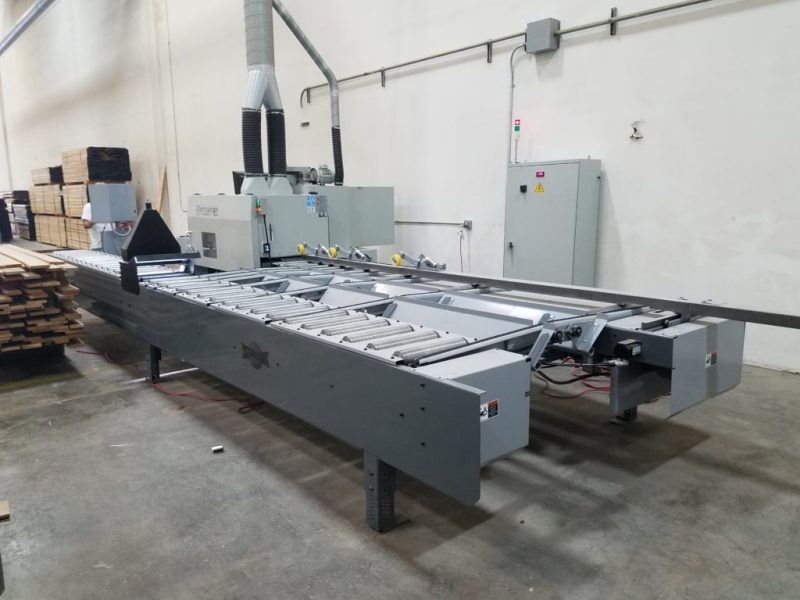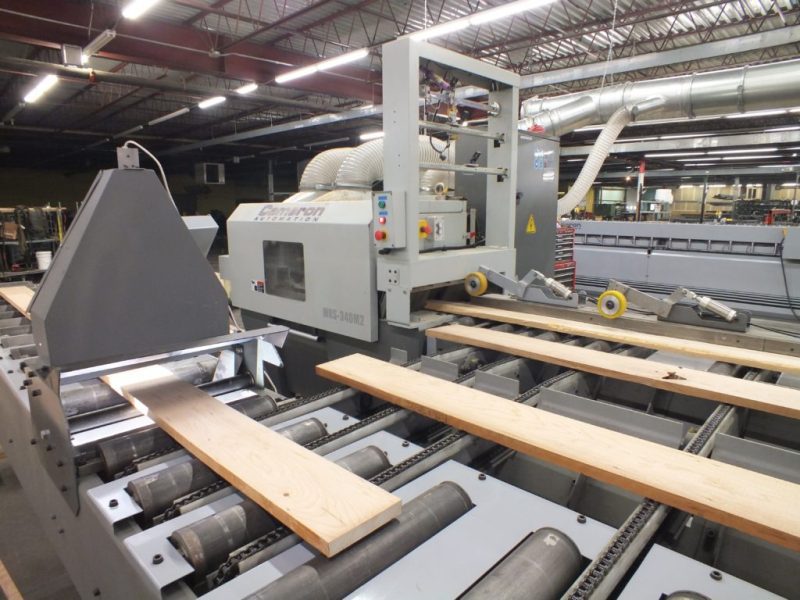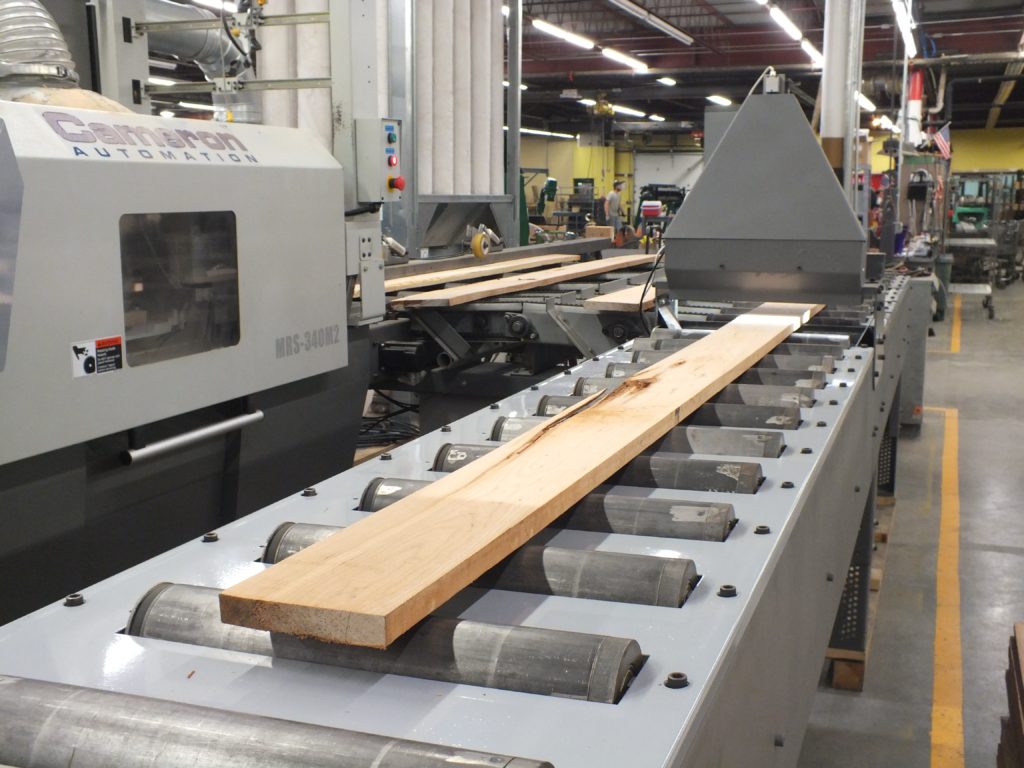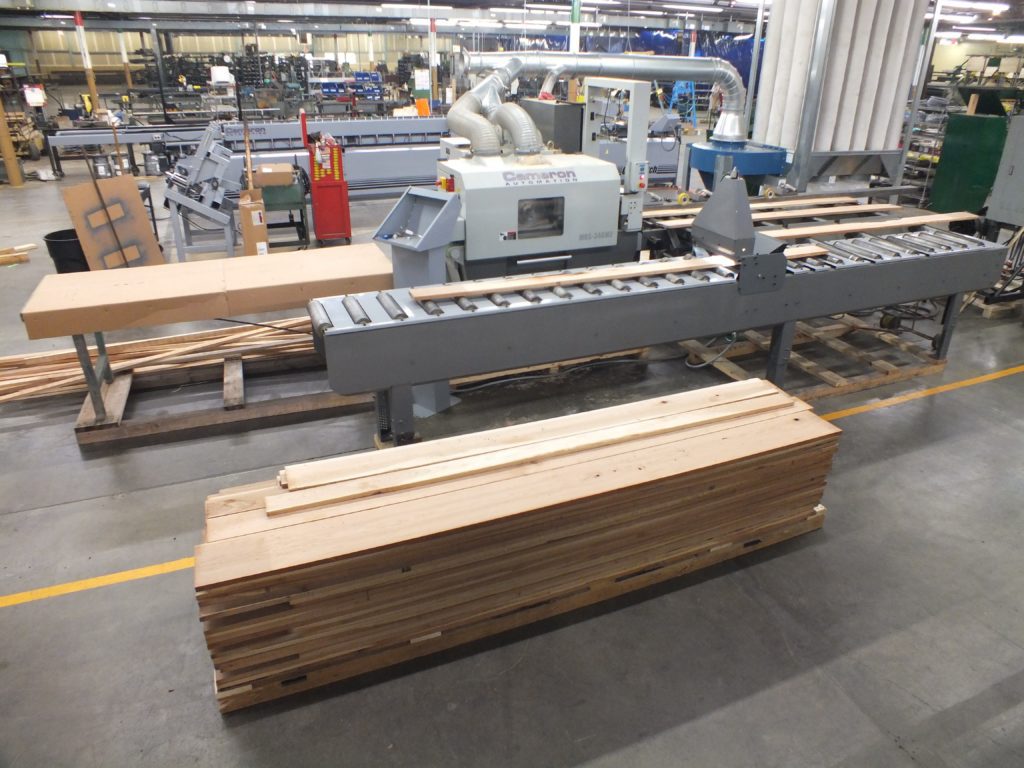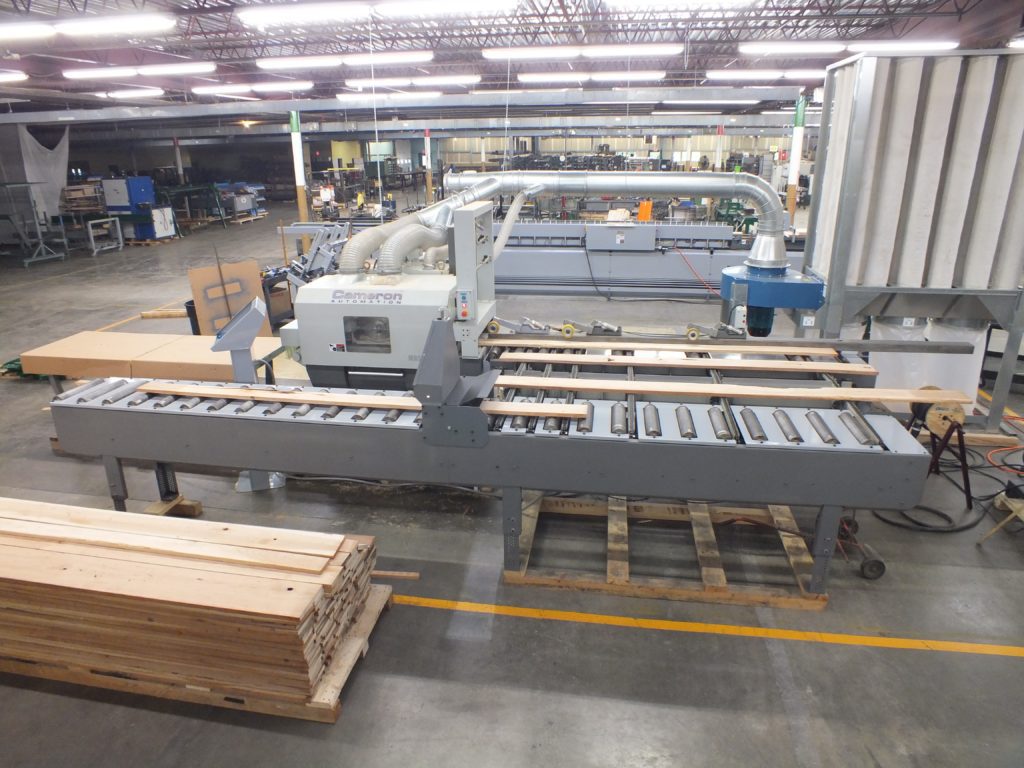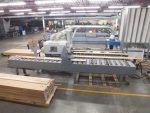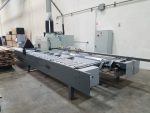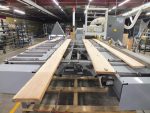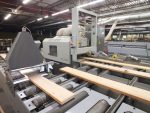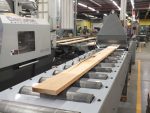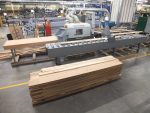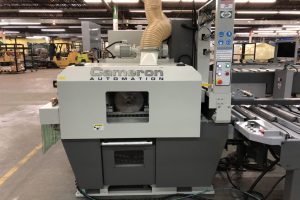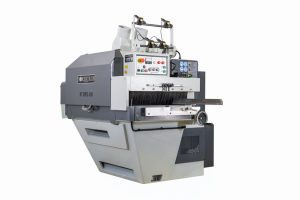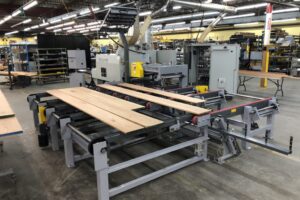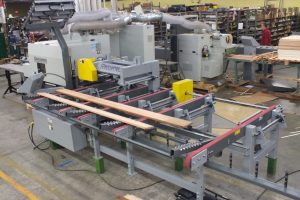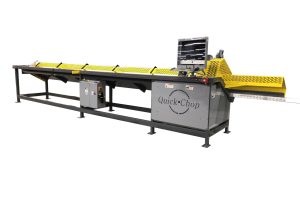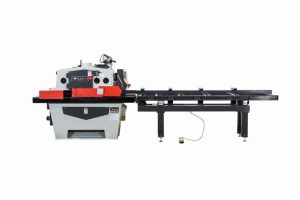How it Works:
- Material reaches the infeed rollers manually or by conveyor.
- The Cameron software figures out how to rip the board based on yield, board value, or required amounts.
- Boards are kept in queue at the first and second stops until the machine is ready to process them.
- Boards are released to the fence, which is positioned and skewed to feed the board at the right spot on the arbor. The moving blades are moved into place to create the proper rip sizes.
The ripped board ends up right beside the operator. This makes it easy for the same operator to stack the finished material. It also gives him instant feedback on how the system is performing.
Simple to Use:
- High resolution scanning at a reasonable price
- Multiple scanning profiles can be saved and re-used depending on the material.
- Full control over scanning parameters to meet your needs
- Not time spent trying to rip around knots and wane, and more time producing material
- Communicates with moving blade saws to position blades automatically.
- Can be run as a one-man, two-man, or fully automated operation.
- Simple to operate with no need for specially trained operators
- Software can choose from different cut-bills based on board length.
- Software is built on the time-tested Opti-Rip platform
- Extremely compact design
Production:
- Current Installation Production Rates
- Minimum = 3000 – 4000 bd. ft. per Day
- Maximum = 8,000 – 9,000+ bd. ft. per Day
- Max Production
- Typically Includes a Material Handling Outfeed System
- (1) Operator Loading the Infeed
- Outfeed Chains to Catch Rips and Cross Transfer
- (1 ) Operator pulling Material from the Chains into Carts
- (7 – 8) 10 Ft. Long Boards per Minute
- (2) Operators
- (1) Operator loading the Infeed and (1) Operator Tailing the Machine
- (5 – 6) 10 Ft. Long Boards per Minute
- (1) Operator
- (1) Operator Loading the Infeed and Tailing the Machine
- (3 – 4) 10 ft. Long Boards per Minute
Cameron Rip One Infeed
- Lumber Capacities
- Standard Machine: 5 Ft. Minimum / 16 Ft. Maximum
- Short Stock Machine: 28″ Minimum / 16 Ft. Maximum
- Thickness Tolerances
- 12″ Saw Blades: 2.5″
- 14″ Saw Blades: 3.75″
- Maximum Width (Incoming Material)
- 14″ Wide
Why Cameron Scanning:
- Cameron scanning offers an affordable scanning solution while other systems cost 2-3 times more.
- The system identifies defects by color and profile. Parameters for defect detection can be modified by the user. Multiple parameter profiles can be saved for different wood species.
- Optimization software uses defect information to maximize usable product.
- The scanners use long lasting, inexpensive LED lighting.
- The entire system is built with off-the-shelf computers and hardware. This makes the system inexpensive to maintain and upgrade.
- There is no need for specialized operator training to run a Rip-One. Simply create a profile that rips the way you want it to and save! All the operator does is load and unload!
- Software is based on the Opti-Rip optimization platform that has been continually refined since the early ‘90’s.
- The system can be efficiently run as a one-man or two-man operation, depending on production requirements.
- Cameron Automation has over 20 years of optimizing experience. Using this, we have developed a scanning system that is easy to run, maintain, and rips the way YOU want it to!
Benefits of a Cameron Rip System:
- Award winning support.
- Software for both the Infeed and Gang Saw is written in house in Poughkeepsie, NY
- Industry leading features with the Auto-Skew and Over/Under design.
- Powerful Software to help improve your business and make you more profitable.
- Significant Yield Increases that go directly to the Bottom Line by decreasing Lumber Bills and Improving Productivity


